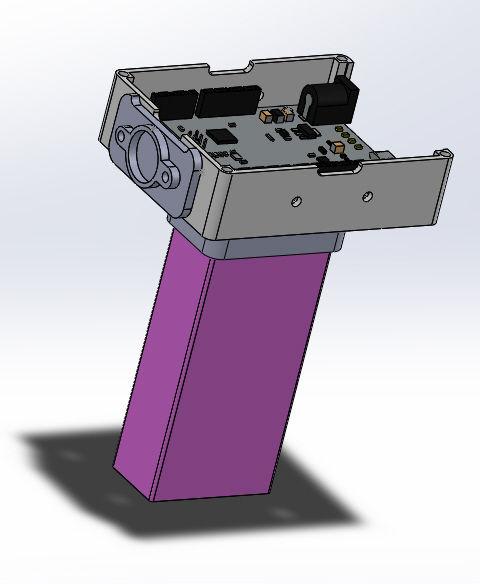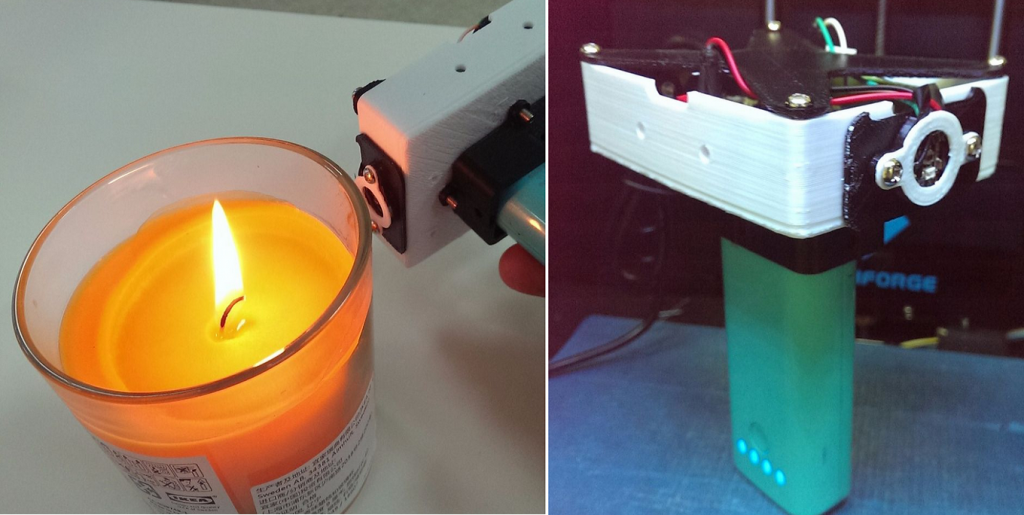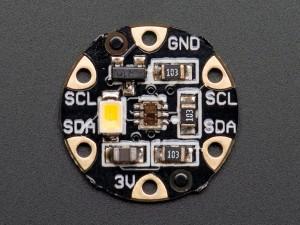One Instructables contributor from Taipei, Taiwan, who goes by the nickname “kunfufaresi,” decided to circumvent the market for expensive but must-have (for the highest quality imagery, anyway) photography and videography equipment and make his own 3D printed, Bluetooth-connected color meter. Color me a little confused, as the technical aspects of this device are a little bit complicated. However, if you are in need of an inexpensive but accurate color meter, can follow some straightforward coding instructions, and have a 3D printer or a favorite online 3D printing service (Instructables now lets you connect right to 3D Hubs), you can complete this project.
A color meter is not the same thing as an exposure meter. The latter tells you how much light you’re using when you’re shooting or filming. So, why would you need a color meter? If you are a photographer or videographer, then you want to get a reading on the light and color of a given scene you’re shooting as you will be using it later during post-processing.
 Most color meters will give you a color temperature reading. This is measured in degrees Kelvin (K) in what is known as the “red-blue spectrum”–basically, the colors visible to the human eye. This reading helps you make choices about color when you’re shooting and later on. With a color meter you will also get an LB (light balancing) reading, a mechanism for using amber and blue filter corrections for light that isn’t conducive to a more harmonious still image or video. You also get a CC (color correction) reading that helps you adjust color–it displays magenta and green corrective filter values.
Most color meters will give you a color temperature reading. This is measured in degrees Kelvin (K) in what is known as the “red-blue spectrum”–basically, the colors visible to the human eye. This reading helps you make choices about color when you’re shooting and later on. With a color meter you will also get an LB (light balancing) reading, a mechanism for using amber and blue filter corrections for light that isn’t conducive to a more harmonious still image or video. You also get a CC (color correction) reading that helps you adjust color–it displays magenta and green corrective filter values.
It’s all pretty technical and confusing but this is a skill you’d learn if you were training to become a professional photographer, videographer, or filmmaker. Fortunately, someone else has done the science and you just have to know how to use the instrument, the color meter.
Kunfufaresi’s color meter uses Bluetooth 4.0 to interface with your smartphone, where it displays the readings that the sensor is picking up. The case for the color meter is 3D modeled and printed and the nuts and bolts are uniform–10mm M3.
If you are taking on this project, you will need the following materials besides the 3D printed parts, which shouldn’t cost more than about $45, and kunfufaresi provides links to each type he used:
– A Bluno, which is a Bluetooth 4.0 Micro-controller compatible with Arduino Uno
– RGB color sensor with IR filter and white LED (from Adafruit)
– A generic portable USB battery
– 4 Arduino jumper cables (also from Adafruit)
The color sensor uses I2C (inter-integrated circuit) for communication. Therefore, wiring is pretty straightforward–3v from sensor to 3.3v on the Arduino. Kunfufaresi directs you to the Wiki instructional page for the Bluno, specifically for changing the name the Bluetooth is broadcasting so that the communication is direct from the Android app. You may also need to modify the battery connector to sync with whatever battery you use.
Kunfufaresi’s Instructables page provides prospective makers of this project with the Android code, the Arduino code and the STL files for 3D printing. He used a Flashforge 3D printer for the project but you can check the STL files and compare build volumes between your home printer and the Flashforge 3D printer to ensure you can print the parts yourself. Most home 3D printers can definitely handle this project.

Subscribe to Our Email Newsletter
Stay up-to-date on all the latest news from the 3D printing industry and receive information and offers from third party vendors.
You May Also Like
Gorilla Sports GE’s First 3D Printed Titanium Cast
How do you help a gorilla with a broken arm? Sounds like the start of a bad joke a zookeeper might tell, but it’s an actual dilemma recently faced by...
Nylon 3D Printed Parts Made More Functional with Coatings & Colors
Parts 3D printed from polyamide (PA, Nylon) 12 using powder bed fusion (PBF) are a mainstay in the additive manufacturing (AM) industry. While post-finishing processes have improved the porosity of...
$25M to Back Sintavia’s Largest Expansion of Metal 3D Printing Capacity Since 2019
Sintavia, the digital manufacturing company specializing in mission-critical parts for strategic sectors, announced a $25 million investment to increase its production capacity, the largest expansion to its operations since 2019....
Velo3D Initiates Public Offering in a Bid to Strengthen Financial Foundations and Drive Future Growth
Velo3D (NYSE: VLD) has been among a number of publicly traded 3D printing firms that have attempted to weather the current macroeconomic climate. After posting a challenging financial report for 2023,...

































